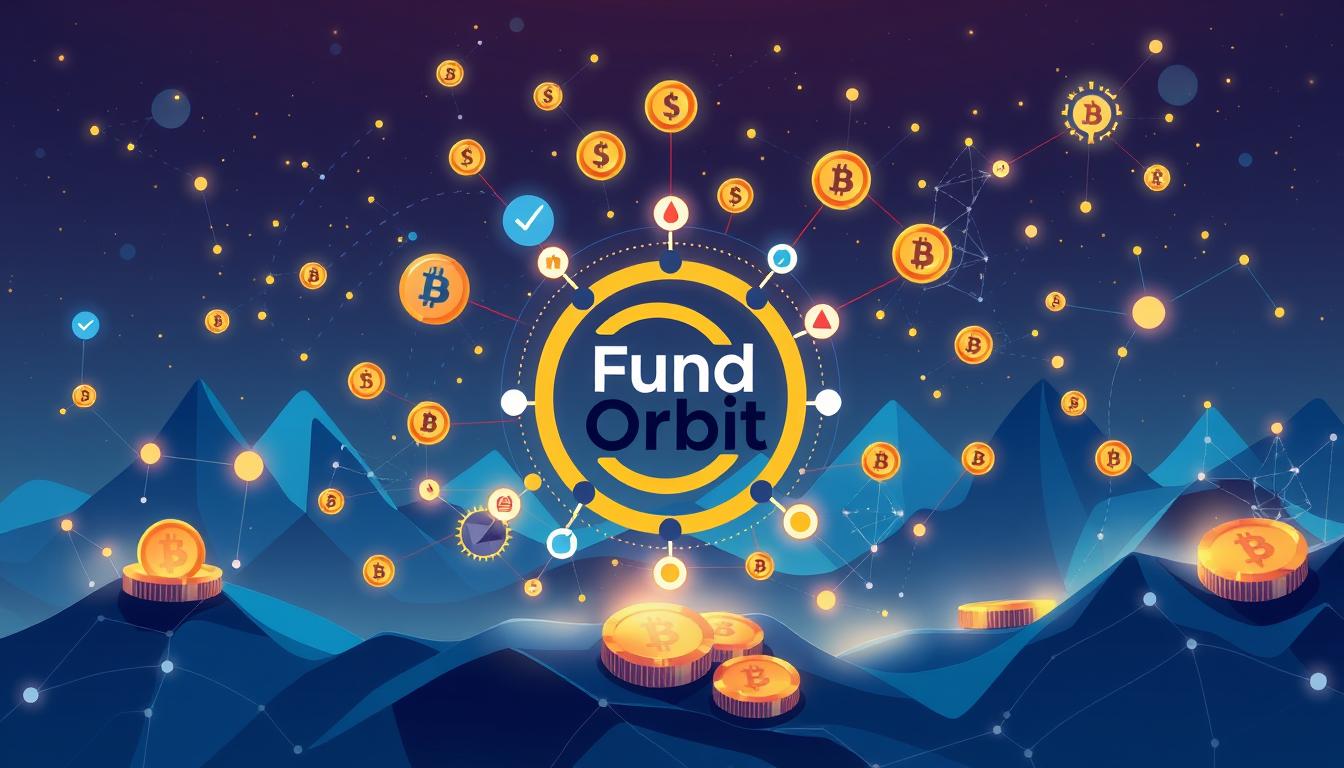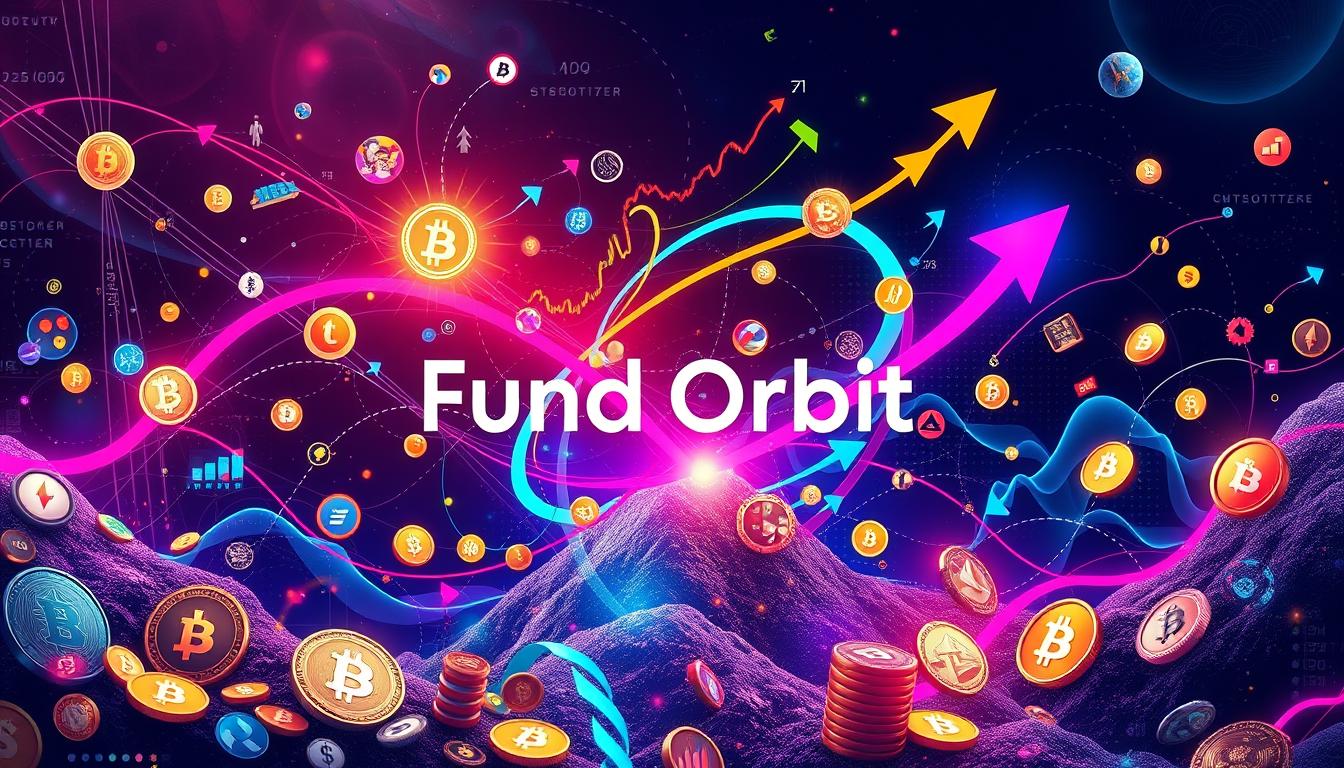The blockchain technology market is experiencing unprecedented growth, with its global size estimated at $10.02 billion by the end of 2022 and projected to reach $3.1 trillion by 2030. This rapid expansion is transforming industries and creating new opportunities for businesses and individuals alike.
At CoWrit Technologies Inc, we’re passionate about helping businesses understand and leverage cutting-edge technologies like blockchain to stay competitive. With North America holding the largest market share and over 85 million blockchain wallets registered worldwide by July 2023, it’s clear that blockchain innovation is driving significant change.
As we explore the latest trends and developments in blockchain, we’ll examine how this technology is maturing beyond its cryptocurrency origins to power various sectors, from supply chain management to digital identity systems.
Key Takeaways
- The global blockchain technology market is projected to reach $3.1 trillion by 2030.
- North America holds the largest blockchain technology market share.
- Over 85 million blockchain wallets were registered worldwide by July 2023.
- Blockchain technology is being applied beyond cryptocurrency to various industries.
- Staying competitive requires understanding and leveraging cutting-edge blockchain innovations.
The Evolution of Blockchain Technology
Since Bitcoin’s launch in 2009, blockchain technology has evolved far beyond its initial cryptocurrency roots. We have witnessed a significant transformation in how blockchain is perceived and utilized across various industries.
From Bitcoin to Modern Blockchain Applications
The early days of blockchain were dominated by cryptocurrency applications. However, we’ve seen a remarkable expansion into areas like supply chain management, healthcare record-keeping, and digital identity verification. Modern blockchain platforms such as Ethereum, Solana, and Polkadot have expanded capabilities beyond simple transactions to include smart contracts and decentralized applications (dApps).
How Blockchain Has Proven Its Value
Blockchain has demonstrated its worth as an excellent system for storing value and maintaining data integrity. The claim that blockchain is immutable and can’t be edited or otherwise changed has held true, with no successful hacks of properly implemented blockchain systems reported to date. Businesses across sectors are now implementing blockchain solutions to solve specific problems.
| Platform | Primary Use | Notable Features |
|---|---|---|
| Ethereum | dApps, Smart Contracts | Robust developer community, wide adoption |
| Solana | Fast Transactions, dApps | High scalability, low transaction fees |
| Polkadot | Interoperability, Custom Blockchains | Scalability, interoperability between blockchains |
Emerging Blockchain Technologies Transforming Industries
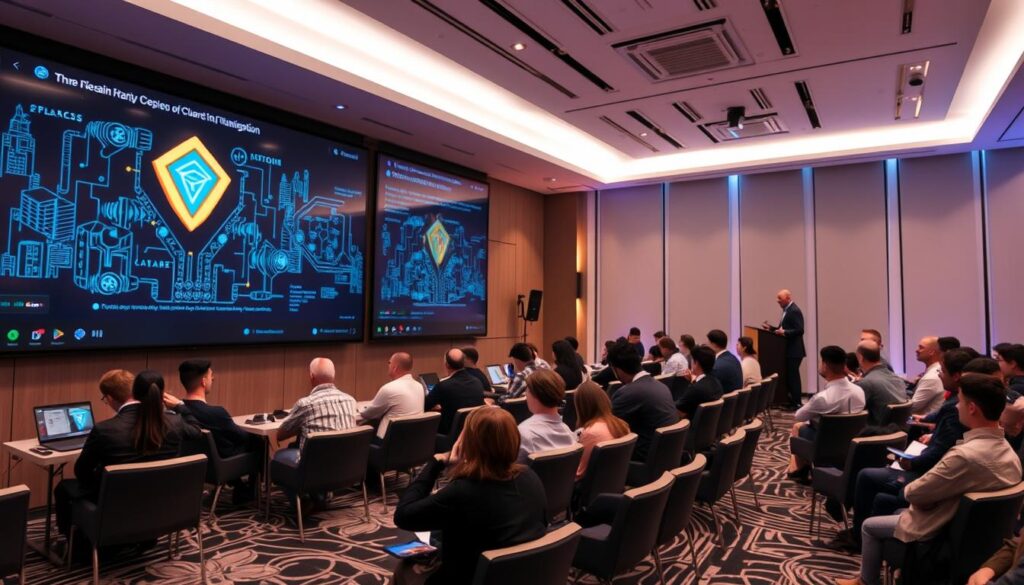
As we dive into the world of emerging blockchain technologies, it’s clear that 2024 is shaping up to be a transformative year for industries across the globe. The interest in blockchain and digital finances is growing in both the private and public sectors, driving innovation and expanding use cases beyond cryptocurrency.
The need for transparency and security has become the cornerstone of our digital experience, and blockchain technology is at the forefront of this shift. With government authorities worldwide increasingly supporting and adopting blockchain technologies, a more favorable environment for innovation is being created.
Blockchain’s Market Growth and Adoption
The blockchain market is experiencing significant transformation as it moves from experimental projects to production-ready solutions addressing real business challenges. In 2022, the infrastructure and protocols sector led the market, representing over 61.0% of global revenue. Large enterprises are at the forefront of blockchain implementation, accounting for more than 67% of global revenue share by the end of 2022.
- We’re seeing remarkable growth in blockchain adoption across industries, with the infrastructure and protocols sector leading the market.
- Large enterprises are driving blockchain implementation, accounting for more than 67% of global revenue share.
- The increasing interest in blockchain from both private and public sectors is driving innovation.
Key Drivers Behind Blockchain Innovation
Key drivers behind blockchain innovation include the demand for decentralized systems, the need for trusted data exchange, and the push for more efficient cross-border transactions. Organizations are leveraging blockchain to create competitive advantages and new business models in their respective industries.
The evolution of blockchain technology is being shaped by both technological advancements and changing market demands, creating a dynamic ecosystem of solutions. As businesses continue to explore and adopt blockchain technologies, we can expect to see even more innovative applications emerge.
Interoperability: Building Bridges Between Blockchains

Blockchain interoperability is emerging as a crucial factor in creating a unified and robust blockchain ecosystem. As the number of specialized blockchains for payments, data storage, and smart contracts continues to grow, the need for seamless interaction between these independent systems becomes increasingly important.
Cross-Chain Communication Protocols
Several projects are pioneering cross-chain communication protocols to address this need. For instance, the Cosmos Network utilizes the Interblockchain Communication Protocol (IBC), enabling different blockchains to exchange information through certificate creation. Other notable examples include Polkadot’s Parachain technology, Cardano’s bridge concept, and Lisk’s Cross-Chain Messages.
These interoperability solutions are breaking down the silos between different blockchain networks, allowing them to communicate and share data seamlessly. By facilitating cross-chain interactions, these protocols are creating new opportunities for blockchain development and applications.
Benefits of Connected Blockchain Ecosystems
The benefits of connected blockchain ecosystems are multifaceted. Enhanced scalability, improved user experience, and the ability to leverage the unique strengths of different blockchain platforms are just a few advantages. Interoperability is enabling developers to build more complex applications with features that would be impossible on a single blockchain.
Some key benefits include:
- We’re witnessing a significant shift toward blockchain interoperability as the ecosystem expands with specialized blockchains for payments, data storage, smart contracts, and more.
- Interoperability solutions are breaking down the silos between different blockchain networks, allowing them to communicate and share data seamlessly.
- Projects like Cosmos Network with its Interblockchain Communication Protocol (IBC) are pioneering cross-chain communication by enabling different blockchains to exchange information through certificate creation.
- The benefits of connected blockchain ecosystems include enhanced scalability, improved user experience, and the ability to leverage the unique strengths of different blockchain platforms.
- Interoperability is enabling developers to build more complex applications with features that would be impossible on a single blockchain.
As blockchain technology continues to evolve, creating standards and protocols that allow different systems to work together harmoniously will be crucial. The future of blockchain increasingly depends on achieving seamless interoperability between diverse blockchain networks.
Tokenization and Digital Asset Revolution

Tokenization is at the forefront of a digital asset revolution, transforming the way we represent, own, and trade assets on the blockchain. This innovation is creating new opportunities for investors and opening up new avenues for asset management.
Real-World Asset Tokenization
Real-world asset tokenization involves converting rights to an asset into a digital token on a blockchain. This process is particularly impactful in the real estate sector, where it enables fractional ownership of properties, making high-value investments more accessible to a broader range of investors.
By tokenizing assets such as real estate, art, and commodities, we can create more liquid markets and reduce the friction associated with traditional asset transfers.
NFTs Beyond Digital Art
NFTs, or non-fungible tokens, have evolved beyond their initial application in digital art. They now represent unique ownership of various digital and physical assets, including virtual real estate, gaming items, and intellectual property.
The versatility of NFTs is creating new revenue streams for creators and businesses, establishing verifiable digital scarcity and ownership.
Stablecoins and Digital Currencies
The volatility of cryptocurrencies like Bitcoin has led to the development of stablecoins, digital assets designed to maintain a stable value by being pegged to fiat currencies or other stable assets like gold.
Stablecoins and central bank digital currencies (digital currencies) are reshaping the financial landscape, combining the efficiency of blockchain technology with the stability needed for everyday transactions.
As we continue to explore the potential of tokenization and digital assets, it’s clear that these innovations are fundamentally changing our concept of ownership, making it more granular, transferable, and programmable.
Decentralized Finance (DeFi): Reshaping Financial Systems
We’re witnessing a significant shift in financial paradigms with the advent of DeFi. The DeFi ecosystem is evolving beyond basic lending and borrowing protocols to include sophisticated financial instruments such as decentralized derivatives, options trading, and algorithmic stablecoins.
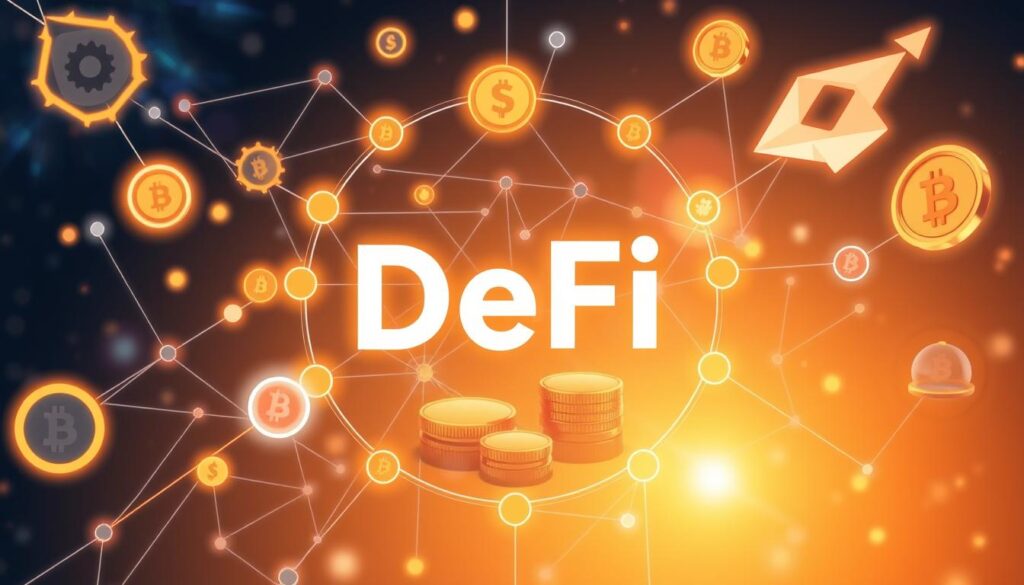
Advanced DeFi Instruments and Applications
The growth of DeFi is driven by platforms like Ethereum, which enable developers to create complex DeFi applications. Automated Market Makers (AMMs), Decentralized Exchanges (DEXs), and yield farming protocols are putting users in control of their assets while allowing participation in governance.
As DeFi continues to expand, we’re seeing the emergence of comprehensive financial services that rival traditional finance in complexity and utility. For more information on the technical aspects of DeFi, you can refer to this study.
The Future of Banking with Blockchain
The banking sector stands to benefit significantly from blockchain adoption, with potential cost savings of up to 30% in infrastructure expenses. This translates to approximately $12 billion annually. The future of banking with blockchain includes more efficient cross-border transactions, reduced settlement times, and new models for customer engagement and service delivery.
As DeFi challenges traditional banking models, it also inspires innovation within established financial institutions. The integration of blockchain technology into financial systems is creating opportunities for greater financial inclusion, particularly for the unbanked and underbanked populations worldwide.
Sustainable and Practical Blockchain Applications

The future of blockchain lies in its ability to provide sustainable and practical solutions to real-world problems, and we’re already seeing this unfold. As we explore the current state of blockchain technology, it becomes clear that sustainability is becoming a key focus area.
Energy-Efficient Consensus Mechanisms
One of the significant advancements in blockchain technology is the shift towards energy-efficient consensus mechanisms. Traditional proof of work (PoW) algorithms require massive amounts of computing power and energy. However, alternatives like proof of stake (PoS) have emerged, significantly reducing energy consumption. For instance, Ethereum’s transition from PoW to PoS in 2022, known as “The Merge,” cut its energy requirements by more than 99%. This shift demonstrates that blockchain can be environmentally sustainable at scale.
Supply Chain Transparency and Management
Blockchain technology is also being leveraged to enhance supply chain transparency and management. By creating an immutable record of a product’s journey from manufacturing to distribution, blockchain enables the tracking of products and ensures authenticity. This is particularly crucial in industries like pharmaceuticals, where approximately 10% of medicines worldwide are counterfeit. Blockchain helps combat counterfeit products by maintaining a transparent and tamper-proof record.
Blockchain and IoT Integration
The integration of blockchain with Internet of Things (IoT) devices is creating powerful new systems for data collection, verification, and automated smart contract execution. This integration enhances the efficiency and security of various applications, from supply chain management to healthcare. By combining blockchain’s security features with IoT’s real-time data collection capabilities, businesses can create more robust and reliable systems.
These practical blockchain applications are solving real-world problems while delivering measurable benefits to businesses and consumers. As blockchain technology continues to mature, we can expect to see even more innovative and sustainable solutions emerge.
Blockchain Governance and Regulatory Landscape
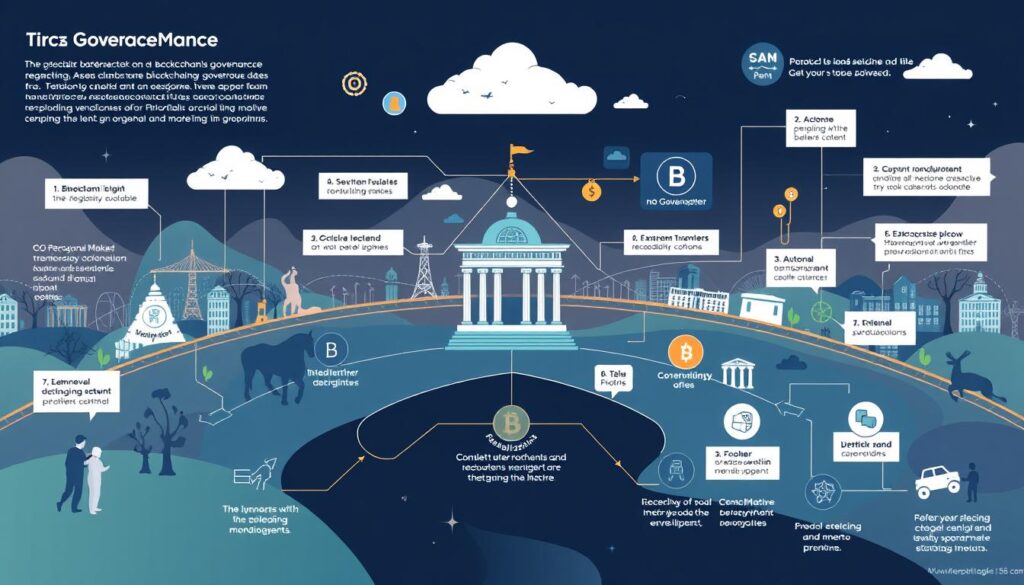
Blockchain governance is becoming a focal point for governments and organizations. As blockchain technology continues to evolve, it’s crucial to understand the regulatory shifts happening globally.
We’re witnessing significant changes in how governments approach blockchain and crypto regulations. Recent political developments in the U.S. suggest a more favorable environment for blockchain technologies, potentially rolling back restrictive measures.
Government Adoption of Blockchain Technology
Governments worldwide are moving from skepticism to strategic adoption of blockchain technology. This shift is evident in the expanding use cases beyond regulation, including digital identity systems and public records management.
The European Union’s Markets in Crypto-Assets Regulation (MiCA) is a significant step towards regulatory clarity, instituting uniform market rules across the region. Such governance frameworks are essential for mainstream blockchain adoption.
Decentralized Autonomous Organizations (DAOs)
Generate an image representing Decentralized Autonomous Organizations (DAOs)
DAOs are challenging traditional organizational structures by enabling stakeholder governance through blockchain-based voting systems. This represents a fundamental shift in how organizations can be structured and governed.
The role of blockchain in governance extends beyond organizations to potentially transforming how citizens interact with government services and participate in democratic processes.
Conclusion: The Future of Blockchain Innovation
Blockchain innovation is poised to transform industries and revolutionize the way we conduct transactions and store data. As we’ve explored throughout this article, the blockchain technology landscape is evolving rapidly, with new trends and innovations emerging constantly.
The future of blockchain lies in its ability to solve real-world problems while creating new opportunities for businesses, governments, and individuals. We anticipate continued growth in DeFi applications, NFT use cases beyond digital art, and increased adoption of blockchain for supply chain management and identity verification.
At CoWrit Technologies Inc, we help businesses navigate these emerging trends and implement blockchain solutions that deliver tangible benefits. Our team of experts provides comprehensive services, including blockchain strategy development, implementation support, and content creation.
To learn more about how we can help your business leverage blockchain technology, contact us via WhatsApp at +44-7822010953 or explore our full range of services, including AI Generative Applications, Content Writing, Website Development, and Digital Marketing. The future of blockchain is bright, and we’re here to help you navigate it.

